Workshop on Brain-Machine Interface – February 19th 2025, Gardanne, France
Neural Horizons: future panorama within Brain-Machine Interfaces
The workshop “Neural Horizons: Future Panorama within Brain-Machine Interfaces” brings together leading European projects to explore cutting-edge advancements in Brain-Machine Interfaces (BMIs). Featuring contributions from prominent projects and organizations like B-CRATOS, Clinatec, and Institut Pasteur, the event offers a comprehensive look at innovations and future prospects of BMIs. In three thought-provoking sessions, participants will delve into pioneering brain implants, evolving human-machine communication, and the future of machine-human interactions, bringing expertise from several key domains including neuroscience, biomedical engineering, next-generation wireless technologies, clinical research, and robotics. This gathering provides a unique opportunity to gain direct insights from our distinguished speakers and strengthen knowledge in the rapidly advancing field of BMI technology.
This event is a satellite event of the Braincoder Conference.
In particular, the workshop will provide a comprehensive look at the innovations and future prospects of BMIs according to the following structure:
- Session: Innovation within Brain Implants: pioneering BMIs whose speakers will be Brice Bathellier (Institut Pasteur), Hans Scherberger (DPZ), Fabien Sauter-Starace (CEA DTIS), Paul Wanda (Blackrock Microsystems Europe) and Paul Le Floch (Axoft)
- Session: Mind Meets Machine: evolutions within communication which will include Robin Augustine (Uppsala University), Charles Rezaei-Mazinani (Ecole de Mine) and Ali Khaleghi (NTNU) as speakers
- Session: Prospects about the Machine-Humans Interactions featuring the following speakers: Marco Controzzi (Scuola Superiore Sant’Anna), Guillaume Charvet (CEA DTIS), Henri Lorach (EPFL)
📅 February 19th, 2025
📌Campus of the Ecole des Mines de St Etienne, 880 Rte de Mimet, 13120 Gardanne
WEBINAR 11 on Fat-IBC – September 12th, 4.00 pm CEST (on Zoom)
The webinar, presented by Robin Augustine and whose title is “Advancing Fat-Intrabody Communication: High-Speed Data Transmission with Low-Cost WLAN Hardware for Enhanced Body Area Networks” will deal with the new application of low-cost WLAN hardware for Fat-Intrabody Communication (Fat-IBC), facilitating the wireless transmission of data within the human body.
WEBINAR 8 on “Neuroethics in the age of innovation” – October 27th, 4pm CEST (on Zoom)
Presentation on neuroethics in the world of BCI with Ranganatha Sitaram (St Jude Children’s Research Hospital), Nicola Di Stefano (National Research Council of Italy, chair of the B-CRATOS ethics board) and Luca Valera (University of Valladolid)
B-CRATOS SUMMER SCHOOL – 27-29 September, Trondheim, Norway
Next Generation Wireless Brain Machine Interface Contact
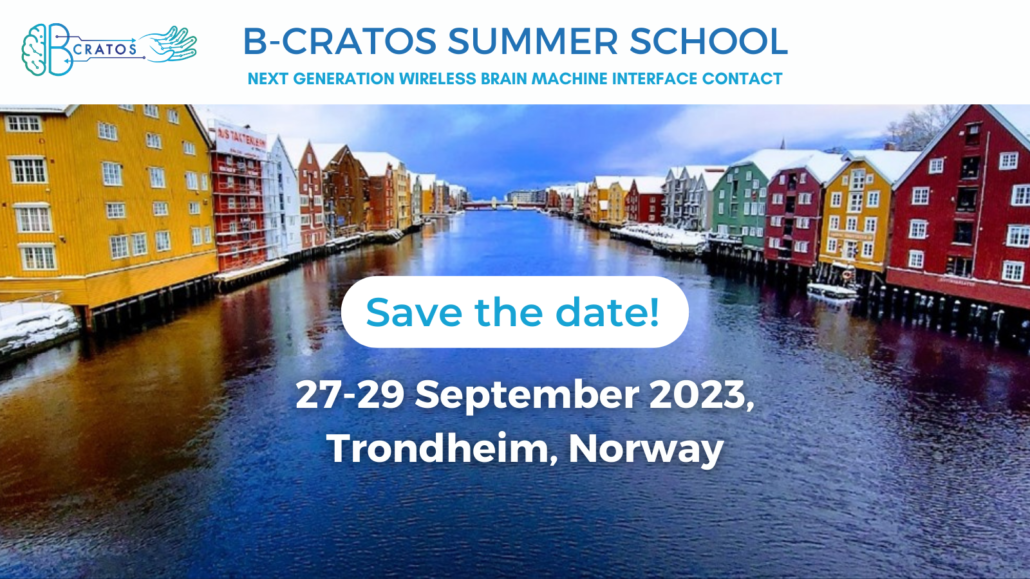
B-CRATOS organizes a Summer School, focusing on Brain Machine Interface but also covering other key technical aspects of the B-CRATOS ambitious project. It will help strengthen your knowledge through direct insights from the B-CRATOS team members and invited speakers.
Wireless technology for brain machine implants has emerged as a cutting-edge field of research, with potential to revolutionize the way we interact with technology and augment our cognitive capabilities. The integration of wireless technology with brain-machine interfaces enables bidirectional communication between the brain and external devices, providing a powerful tool for both diagnostic and therapeutic applications. The importance of this technology lies in its potential to improve the quality of life for individuals with neurological disorders, such as Parkinson’s disease, epilepsy, and paralysis. Wireless brain-machine interfaces can provide targeted stimulation to specific brain regions, restoring lost function and improving cognitive performance. Additionally, wireless implants can provide continuous monitoring of brain activity, allowing for early detection and intervention in cases of neurological disorders.
More information on the dedicated page.
WEBINAR 7 on “The artificial substitution of missing hands“
The replacement of a missing hand by a prosthesis is one of the most fascinating challenges in rehabilitation engineering. For decades, science and engineering have tried to match the sensory and motor features of the human body, designing limbs aiming at replicating the shape and functionality of the natural counterparts. Building such incredible devices and making them wearable and intuitively controllable by people is the goal of prosthetics research. This talk aims at providing an overview of past and present artificial prosthetic hands developed and at discussing the main design issues.
WEBINAR 7: Speakers Bio & Summary
Presentation by Dr. Marco Controzzi (Assistant Professor at Scuola Superiore Sant’Anna) and Dr. Francesco Clemente (Managing Director at Prensilia SRL, Affiliate Professional at Scuola Superiore Sant’Anna
WEBINAR 6 on “Artificial Sensors: towards human-like sense of touch by means of neuromorphic approach”
Conventional electronic (e-) skin, as a large-area electronic device for sensing tactile events, comprises a sensor array, which analog signal is readout by serially sampling individual sensors in the array. The generated frame-based data are usually utilized by machine learning based on artificial neural network (ANN) for artificial sense of touch, e.g., object classification, by touching and grasping. The conventional e-skin has poor energy efficiency that prevents it from up-scalability, and is ill-suited for taking advantage of dynamic tactile information required for rapid tactile feedback.
In this talk, design and development of new e-skins for energy-efficient, dynamic tactile feedback are to be presented. By means of the neuromorphic approach based on neuroscientific theory, building blocks for artificial tactile sensory systems are designed. By means of in mixed hardware and software implementation, event-driven neuromorphic tactile systems that efficiently code dynamic tactile information for rapid object classification, and exhibit an enhancement in the spatial resolution in response to touching and grasping events are demonstrated.
WEBINAR 6: Speakers Bio & Summary
Presentation by Dr. Zhibin Zhang and Dr. James Goodman.
WEBINAR 5 on “Machine Learning – Current Challenges and Opportunities for Neuroprosthetics“
Brain-computer interfaces (BCIs) promise to be an alternative treatment for individuals with a disability, giving them a chance to regain their interaction capacity with the environment and with others. At the same time, Modern AI/ML techniques are changing paradigms in technology and in medicine.
In combination, BCIs and modern ML have the potential of revolutionizing the treatment of neurological conditions. Yet, when both technologies meet, there are still challenges to face. From decoding the mysteries of brain activity to the development of training tools, steps remain to be taken to harness the full power of AI and include the vibrant ML community in the creation of next-generation BCIs.
In this 5th webinar, we will talk about the challenges, and thus consequently, the opportunities in current intracortical BCI development. Departing from our own experience decoding brain activity, data science, and high-performance computing, as well as an example BCI study in human subjects, we will talk about what we believe ML can offer to advance BCIs. With this webinar, we also hope to provide some pointers on how some of you, as individuals with programming skills, can help bridge this gap.
WEBINAR 5: Speakers Bio & Summary
Presentation by Paolo Viviani (PhD), Dr. Andres Agudelo-Toro and Dr. Brian Dekleva (PhD).
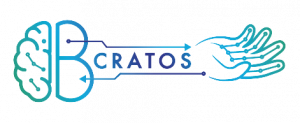
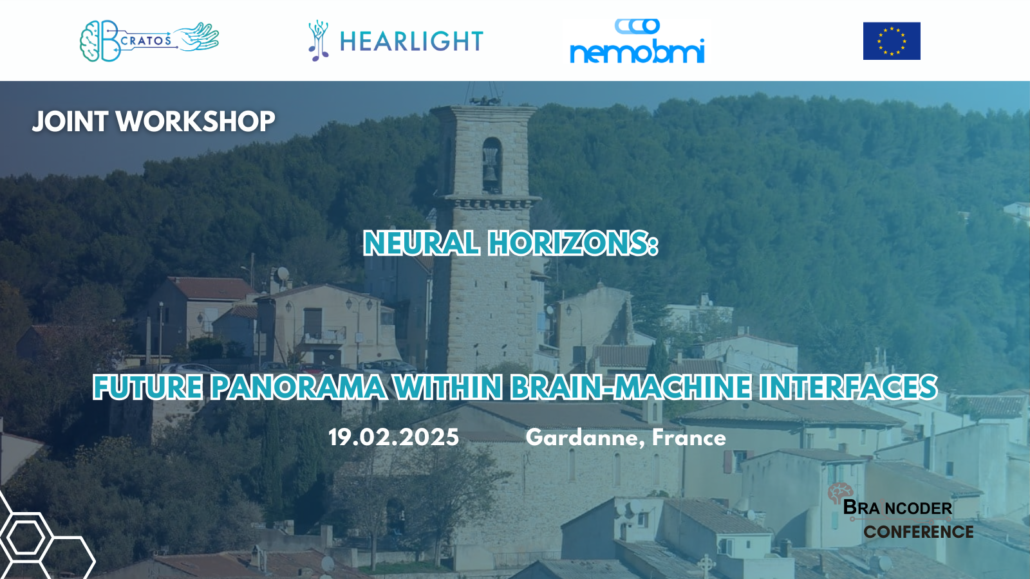
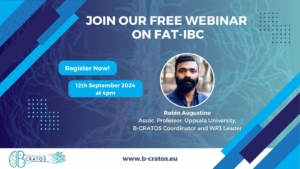
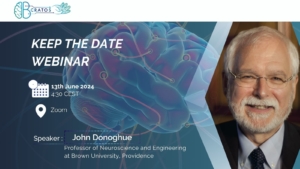
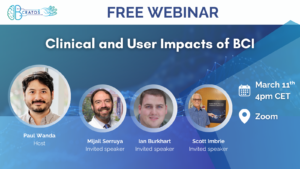
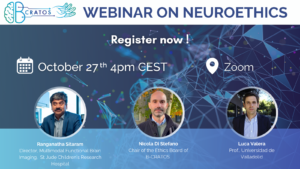
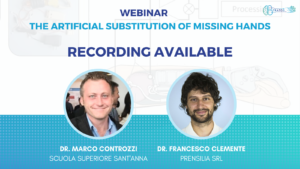
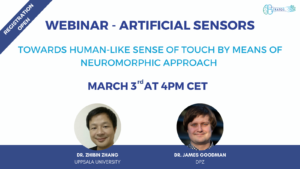
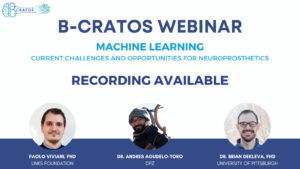
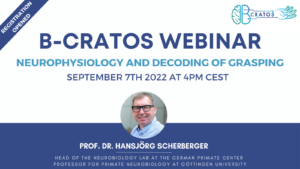
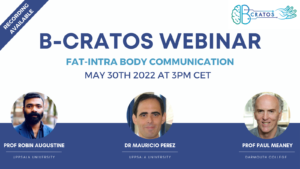
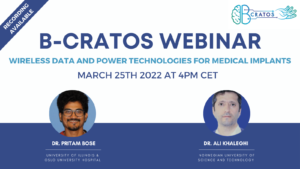
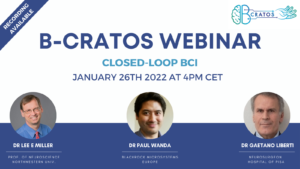

Recent Comments